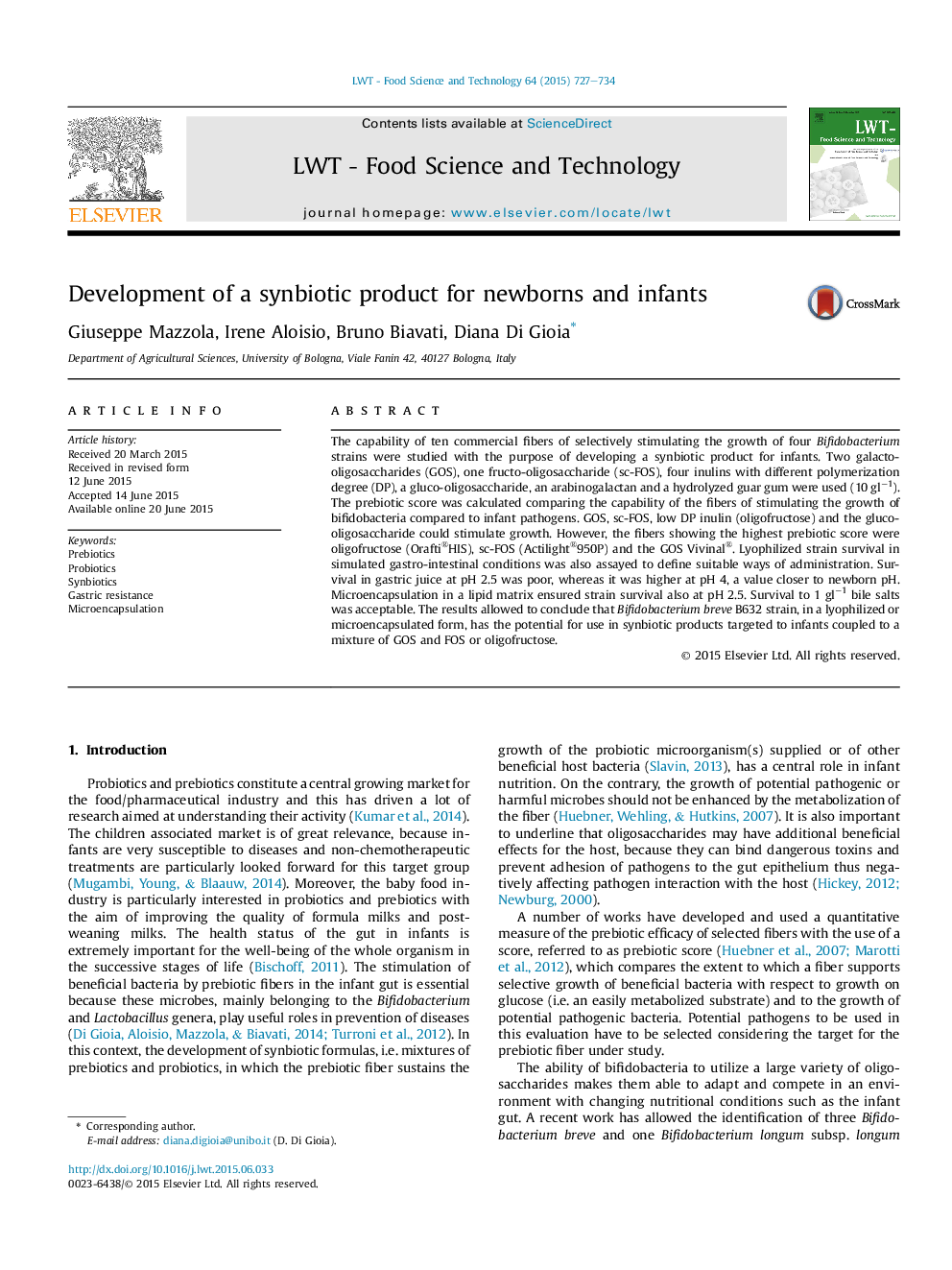| Article ID | Journal | Published Year | Pages | File Type |
|---|---|---|---|---|
| 6401757 | LWT - Food Science and Technology | 2015 | 8 Pages |
â¢The market of synbiotics for children is of great relevance for the industry.â¢Prebiotic activity should consider both beneficial bacteria and potential pathogens.â¢Pathogens for the evaluation of prebiotic activity depends on the end users.â¢Probiotic can be administered to newborns using lyophilized strains.â¢Microencapsulation is necessary when gastric pH gets closer to that of adults.
The capability of ten commercial fibers of selectively stimulating the growth of four Bifidobacterium strains were studied with the purpose of developing a synbiotic product for infants. Two galacto-oligosaccharides (GOS), one fructo-oligosaccharide (sc-FOS), four inulins with different polymerization degree (DP), a gluco-oligosaccharide, an arabinogalactan and a hydrolyzed guar gum were used (10Â glâ1). The prebiotic score was calculated comparing the capability of the fibers of stimulating the growth of bifidobacteria compared to infant pathogens. GOS, sc-FOS, low DP inulin (oligofructose) and the gluco-oligosaccharide could stimulate growth. However, the fibers showing the highest prebiotic score were oligofructose (Orafti®HIS), sc-FOS (Actilight®950P) and the GOS Vivinal®. Lyophilized strain survival in simulated gastro-intestinal conditions was also assayed to define suitable ways of administration. Survival in gastric juice at pH 2.5 was poor, whereas it was higher at pH 4, a value closer to newborn pH. Microencapsulation in a lipid matrix ensured strain survival also at pH 2.5. Survival to 1Â glâ1 bile salts was acceptable. The results allowed to conclude that Bifidobacterium breve B632 strain, in a lyophilized or microencapsulated form, has the potential for use in synbiotic products targeted to infants coupled to a mixture of GOS and FOS or oligofructose.
